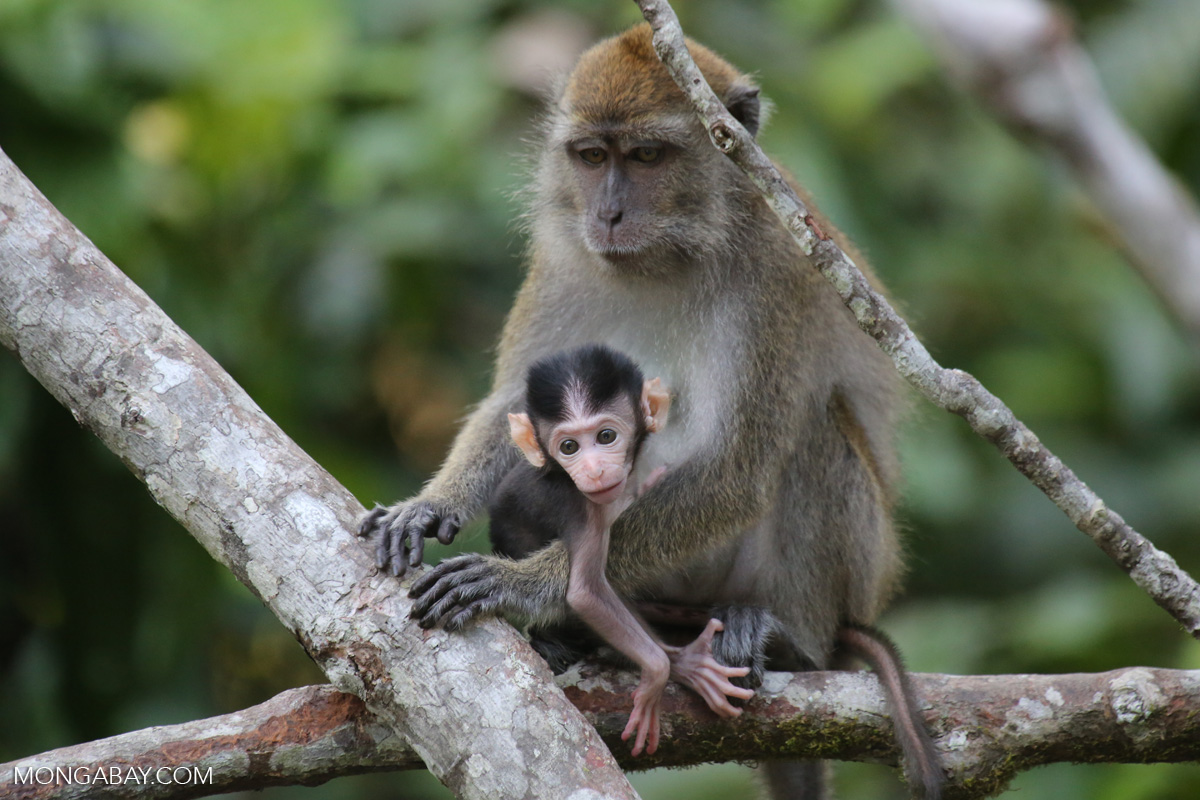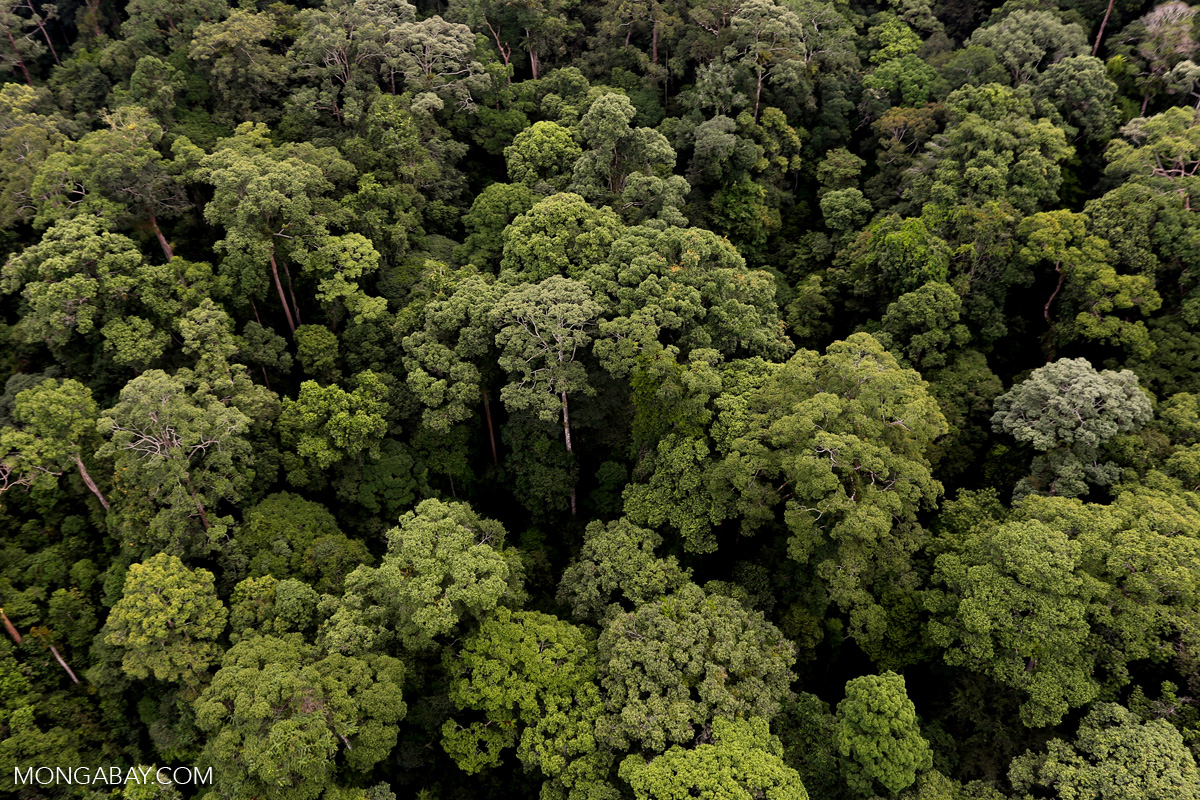- A new study reveals that protected areas in Southeast Asia not only boost bird and mammal diversity within their confines, but they also elevate numbers of species in nearby unprotected habitats.
- The researchers say their findings back up the U.N.’s 30×30 target to protect 30% of Earth’s lands and waters by 2030.
- The findings indicate that larger reserves result in more spillover of biodiversity benefits into surrounding landscapes. The authors call on governments to invest in expanding larger reserves over the proliferation of smaller ones.
- Conservationists say that while expanding protected area coverage is part of the solution, serious investment in management and resourcing for existing protected areas is a matter of urgency to ensure they are not simply “paper parks.”
Protected areas are one of the oldest conservation tools in the box. Setting aside portions of land and water for conservation can offer species a chance of recovery while preserving the ecosystem services on which humanity depends. But despite a wealth of evidence showing that protected areas enhance biodiversity within their borders, little is known about whether those benefits seep into the wider landscape.
In a new study published in Nature, an international team of researchers studying vertebrates in Southeast Asia show that protected areas not only boost bird and mammal diversity within their confines, but that they also elevate numbers of species in nearby unprotected habitats. The findings also indicate that larger protected areas result in more biodiversity gains than smaller ones.
“Our analysis has revealed the benefits [of] parks, specifically large ones,” study co-author Matthew Luskin, a conservation biologist at the University of Queensland in Australia, said in a statement. “When comparing unprotected areas nearby large reserves to unprotected areas that didn’t border large reserves, large reserves generated an up to 194 per cent boost in mammal diversity.”

By demonstrating the crucial role protected areas can play in curbing the biodiversity crisis, the researchers say their findings back up the U.N. Kunming-Montreal Global Biodiversity Framework target to safeguard 30% of Earth’s lands and waters as protected areas by 2030. In December 2021, nearly 200 countries, including many Southeast Asian states, adopted this U.N. goal, known informally as “30×30.”
“Protected area expansions are often a difficult and expensive process, but our results show they are absolutely worth it,” Luskin said. “We already know that protected areas can reduce logging — and you can see that from satellite imagery — but what you can’t see is the number of animals inside the forest.”
Many protected forests in Southeast Asia suffer from “empty forest syndrome,” in which even forests that are well-protected against habitat loss and development pressure are eerily silent and devoid of animals due to widespread indiscriminate snaring and poaching. For this reason, the authors caution against assessing the efficacy of protected areas using only measures of habitat quality.

To examine the effect of protected areas on both forest structure and the animals that live in and around them, Luskin and his colleagues used modern remote-sensing and predictive-modeling techniques combined with data from more than 2,000 bird and camera trap surveys at 65 separate locations across Southeast Asia.
This detailed approach enabled the team to measure aspects like 3D forest complexity and site accessibility at greater resolution than previous similar studies, according to Jonas Geldmann, a biologist at the University of Copenhagen, who was not involved in the study.
“It’s quite unique to have this amount of camera trap data, both inside and outside of protected areas,” Geldmann said. “It is certainly convincing evidence that protected areas are a vital tool to conserve biodiversity.” The observed boost in species diversity outside of protected areas in neighboring, unprotected habitats was “particularly interesting,” Geldmann added.

Conservation biologists have long debated the efficacy of land-based protected areas to safeguard wildlife, with some reasoning that strict habitat protection reduces biodiversity in surrounding areas through “leakage,” whereby threats, such as hunting and deforestation, are simply displaced into adjacent unprotected habitats, risking biodiversity losses.
On the other hand, others point to the well-known success of marine protected areas that routinely showcase an effect known as “biodiversity spillover,” whereby fish breeding within the safety of protected no-take zones produce healthy broods of offspring that eventually disperse to surrounding habitats, boosting fish biomass in the wider area.
The patterns observed in the Southeast Asia study indicate that protections can similarly diffuse biodiversity benefits into the surrounding unprotected landscape, rather than displacing harmful practices and conferring biodiversity losses. In other words, there appears to be a regional pattern of protected areas triggering biodiversity spillover rather than leakage.
The researchers suggest the pattern could be due to protected area management, such as community engagement on sustainable hunting, enforcement, and investment in alternative livelihoods for hunters, reducing pressure on populations inside the protected areas, in turn leading to spillover of animals into surrounding areas.

A combination of approaches
Given pledges from many Southeast Asian countries to meet the 30×30 target, the researchers recommend governments implement expansions by focusing on increasing the size of large reserves over the proliferation of many smaller ones. This strategy “will contribute cumulatively to the conservation of bird and mammal diversity” in the region, the study says.
However, the management of Southeast Asia’s protected areas is as wide-ranging as the habitats they encompass. In recent years, governments in the region have variously taken steps to degazette and downgrade some protected areas while rolling out sweeping expansions at other sites.
Meanwhile, many of the region’s flagship protected areas that harbor some of the world’s most charismatic animals, such as elephants, tigers and gibbons, receive serious investment in management planning, community engagement and antipoaching efforts, while others are underfunded and poorly managed, leaving them vulnerable to encroachment by illegal logging, mining, poaching and other destructive threats.

Geldmann said that while the new findings make a clear case for expanding protected area coverage, much more needs to be done to bring underperforming existing protected areas up to standard through investment in management and resourcing. Only then can we begin to achieve the levels of biodiversity recovery needed, he said.
“Even if we reach 30% protected area coverage, if all we’re thinking about is that coverage, then we will not succeed in halting biodiversity loss,” he said.
Ultimately, a multifaceted approach will be needed: “It’s a question of both ensuring that there are resources and people to actually manage the protected areas, and that there are clear plans for actions that need to be implemented,” Geldmann said, “and also working with people living in and around the protected areas who are affected both positively and negatively by their presence.”
Carolyn Cowan is a staff writer for Mongabay. Follow her on 𝕏 @CarolynCowan11.
Banner image: An Bornean elephant making use of edge, human-modified habitats. Image courtesy of Mike & Valerie Mille.
Citation:
Brodie, J.F., Mohd-Azlan, J., Chen, C., Wearn, O. R., Deith, M. C. M., Ball, J. G. C., … Luskin, M. S. (2023.) Landscape-scale benefits of protected areas for tropical biodiversity. Nature 620, 807–812. doi:10.1038/s41586-023-06410-z
FEEDBACK: Use this form to send a message to the author of this post. If you want to post a public comment, you can do that at the bottom of the page.
